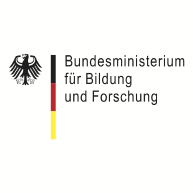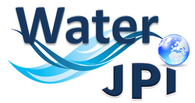AIHABs - AI-powered Forecast for Harmful Algal Blooms

Funding by: This project has received funding from the European Union’s Horizon 2020 research and innovation programme under grant agreement No. 869178-AquaticPollutants.
Funding ID: 03F0901A - Federal Ministry of Education and Research
Funding period: 1.09.2021- 31.08.2024
Project partners: Technological University Dublin, Ireland (Coordinator); University of South Bohemia in České Budějovice, Czech Republic; Helmholtz Centre Potsdam – GFZ German Research Centre for Geosciences, Germany; Norwegian University of Science and Technology, Norway; International Iberian Nanotechnology Laboratory – INL, Portugal; Universidad Autónoma de Madrid, Spain; University of Santiago de Compostela, Spain
Eutrophication of water bodies and global warming in Europe contributes to cyanobacteria's increment to excessive levels, causing Harmful Algal Blooms (HABs). HABs manifestations are correlated to a significant impact on socio-economic systems and human health. The main sectors affected include public health, commercial fisheries, tourism, recreational activities, monitoring, and management. HABs is imposing the most significant market costs on the tourism industry, and the highest non-market costs would be borne by recreational users Fish mortality, illnesses caused by the consumption of contaminated seafood, and consumers' reluctance to purchase fish during HABs episodes represent other economic impacts of HABs. Thus, monitoring and early detection of HABs is essential for the establishment of adequate water governance policies. AI-powered Forecast for Harmful Algal Blooms (AIHABs) is an innovative multi-disciplinary initiative aimed at developing an integrated evaluation system to forecast the risk derived from the presence of emerging cyanotoxins in inland and coastal ecosystems. This project's innovation resides in merging tools as last-generation Artificial Intelligence (AI), remote sensing, nano-sensors, hydrodynamic modeling, and massive genetic sequencing with the joint purpose of providing an early warning system to decision-making authorities in terms of risk to the population. The predicting modeling effort will allow a timely action to minimize the risks of consuming surface waters or using them as recreational resources when the water bodies are prone to produce toxic cyanobacterial blooms. Subsequently, an AI-based software for forecasting water quality in inland and coastal water bodies will be developed through this project.
AIHABs is a consortium of seven partners across Europe. The German part of the project will be contributed by the Helmholtz-Zentrum Potsdam - Deutsches GeoForschungsZentrum GFZ. The GFZ is leading the development of novel AI-based algorithms for the extraction of visual, spectral, and temporal features of HABs from hyperspectral (e.g., HICO, CHRIS, PRISMA, and DESIS), multispectral high-resolution (e.g., Sentinel-2, Landsat-8), and moderate resolution (e.g., MODIS and Sentinel-3) satellites. Additionally, the GFZ will lead the development of HABs early warning system using machine/deep learning algorithms and time series analysis models.








